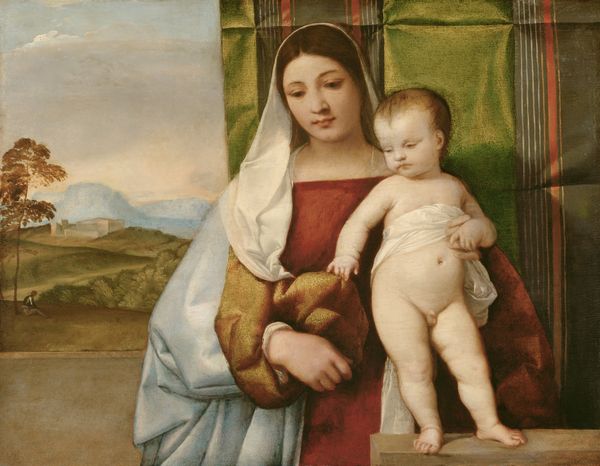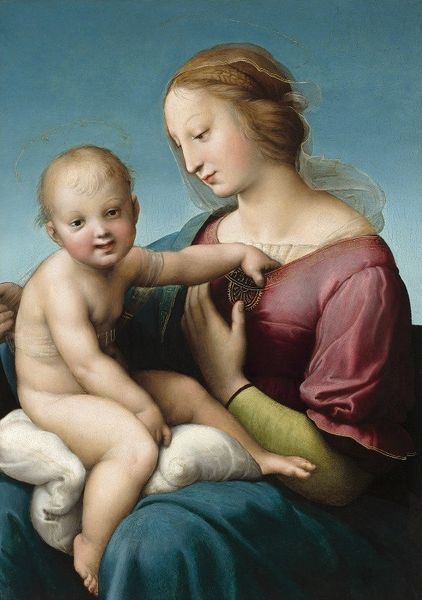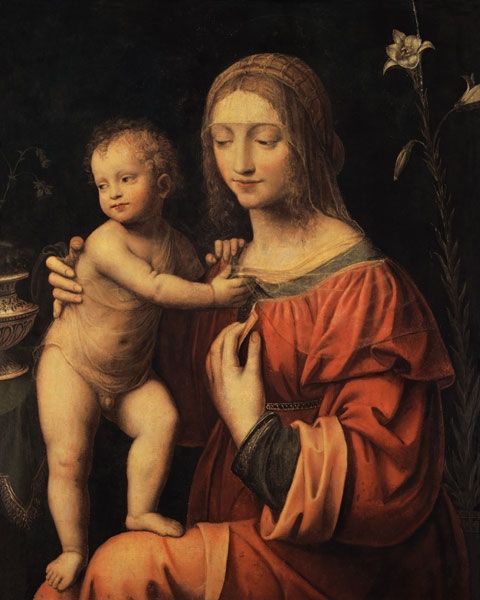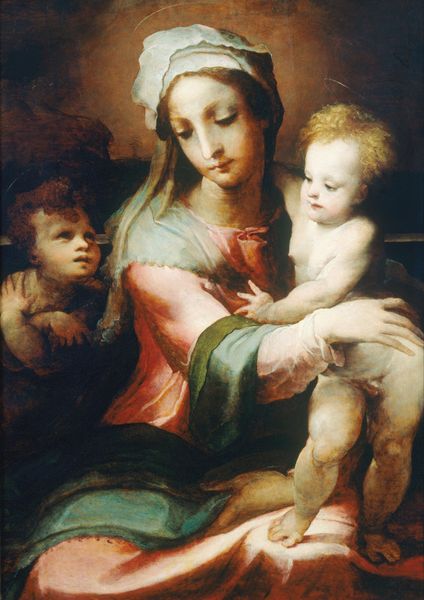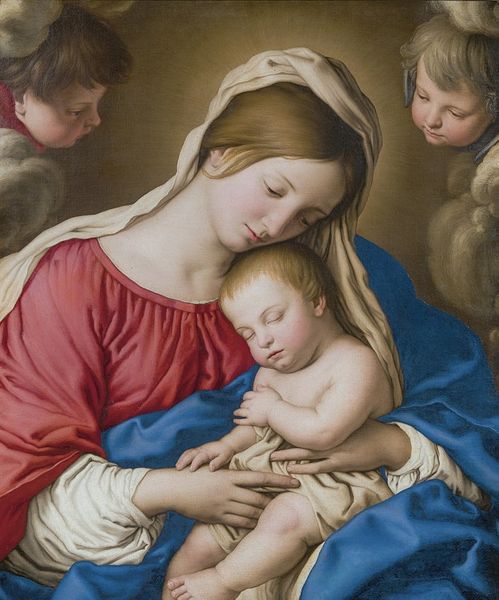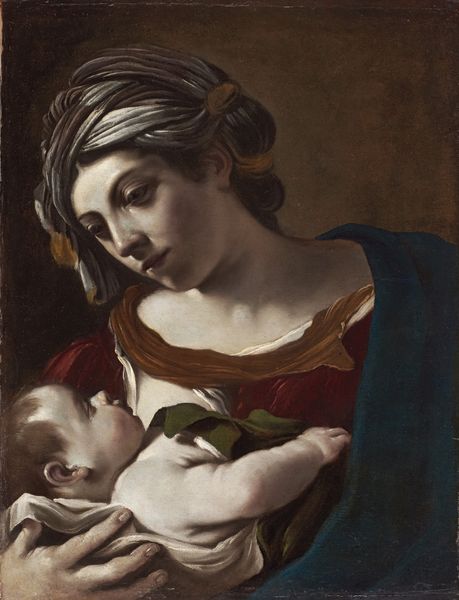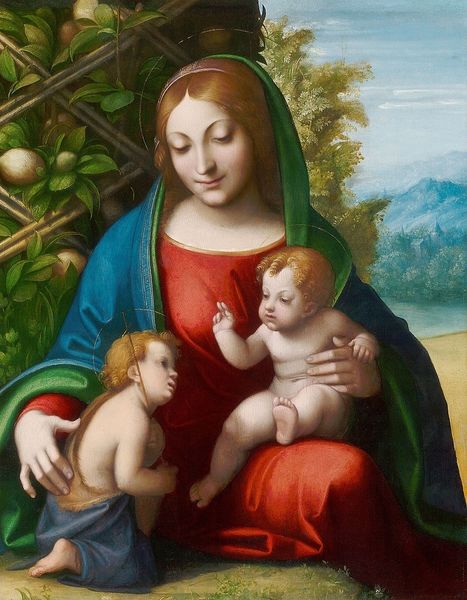
Copyright: Public domain
Editor: Here we have Parmigianino's "Madonna and Child" from 1527, rendered in oil paint. I’m immediately struck by the figures' serene expressions – a quiet intimacy. How do you interpret this work within its historical context? Curator: Well, let’s consider the moment. This is High Renaissance, where we see the Church still wielding considerable cultural and political influence, but also, increasing humanist ideals are gaining traction. This painting becomes part of the visual culture reinforcing the Church’s message of devotion, but also subtly displaying idealized human beauty and emotion, reflective of that growing humanism. Does the way the figures are depicted - their elongated forms, almost mannerist, – influence the message the work sends out? Editor: Definitely. There’s something very elegant, almost theatrical, about the way they're presented. It makes me wonder about the intended audience. Was it purely for religious contemplation, or also about displaying wealth and sophistication? Curator: It’s likely both. Patrons often used religious art as a display of their piety and social standing. Consider where paintings like this were originally displayed, perhaps a private chapel within a wealthy family's home, showcasing their devotion but also their ability to commission such art. The politics of display were intrinsic to the meaning-making process. How do you think that informs our viewing experience today, within the neutral setting of a museum? Editor: That's a really interesting point! Seeing it in a museum strips away some of that original context, highlighting the aesthetic qualities, but also potentially obscuring the original power dynamics. I'll definitely look at Renaissance art with fresh eyes now, thinking about those original viewers and their social status. Curator: Precisely! It reminds us that art always exists within specific social, cultural, and institutional frameworks that are actively shaping its reception, regardless of the artist’s original intention.
Comments
No comments
Be the first to comment and join the conversation on the ultimate creative platform.


